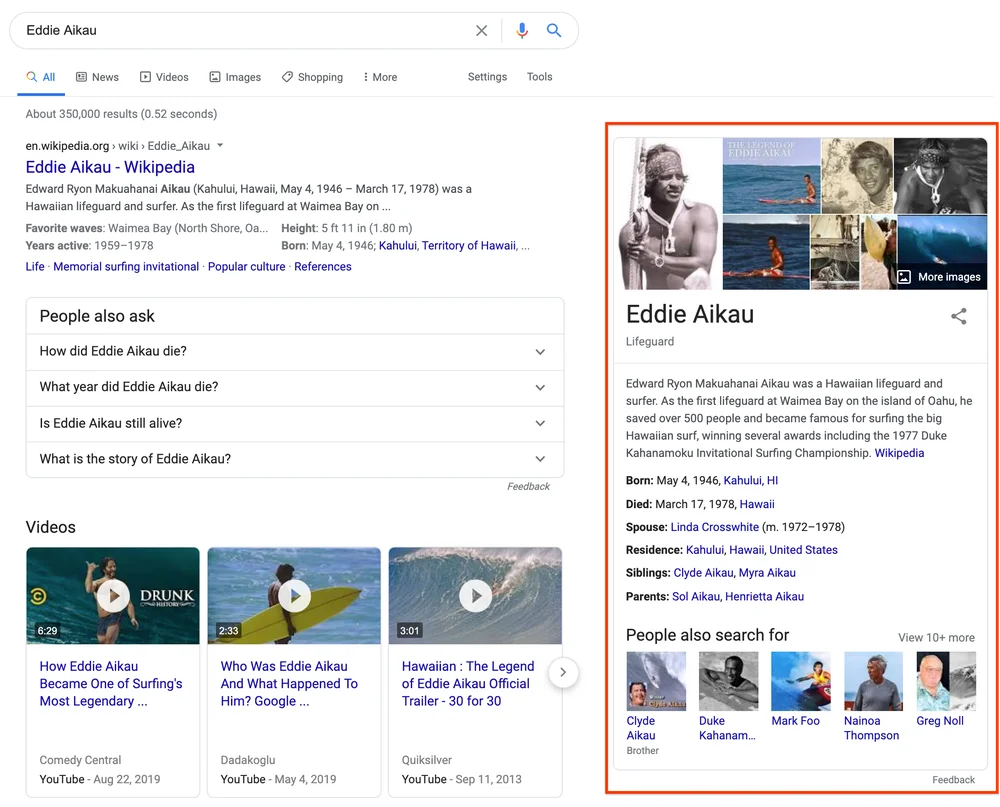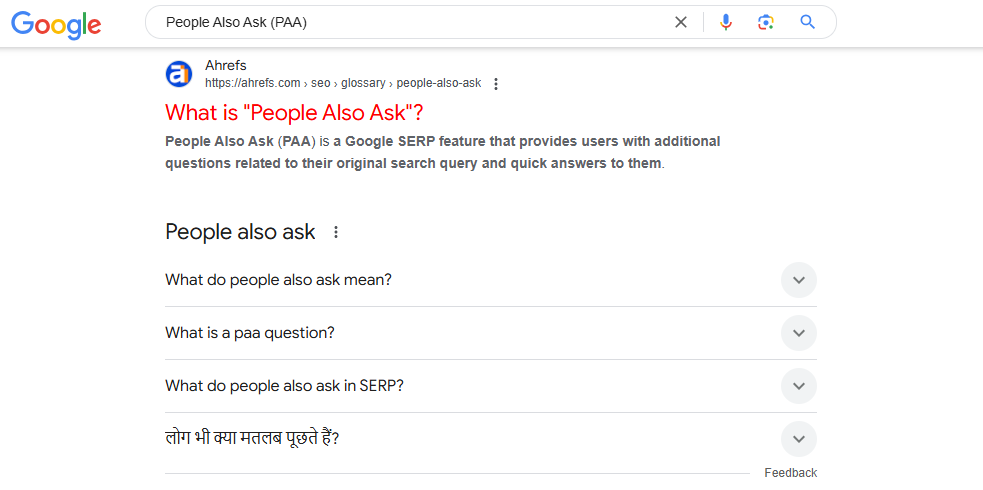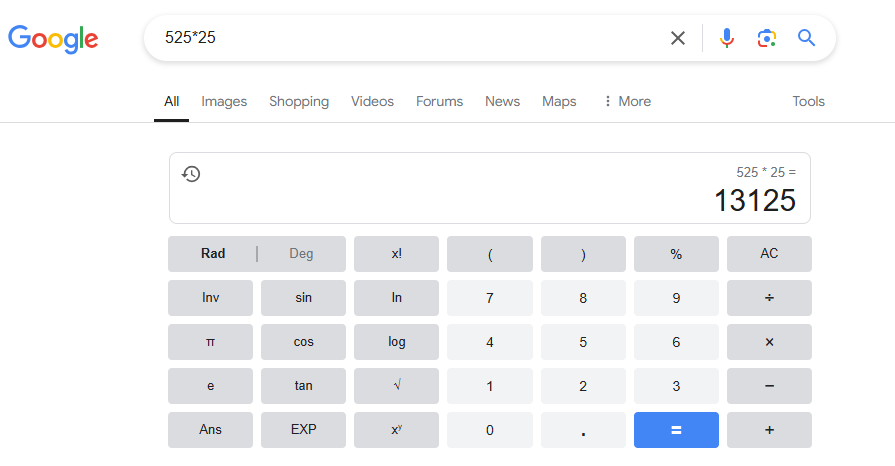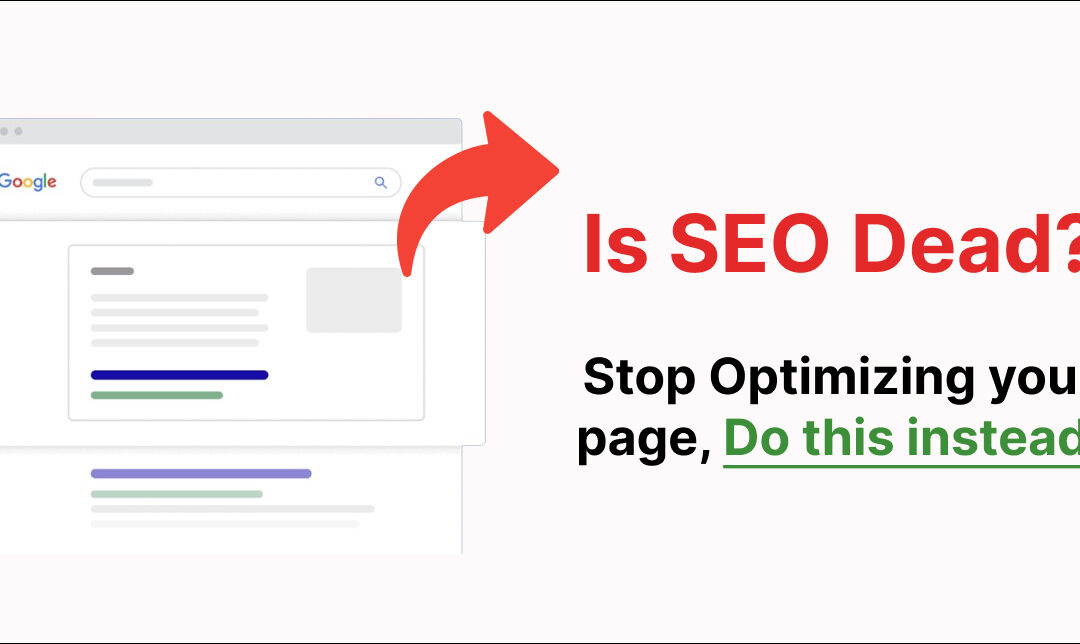1. Introduction
In recent years, digital marketing has witnessed a significant shift with the rise of zero-click searches, where users get their desired answers directly on the search results page, often without visiting a single website. With zero-click search results now becoming increasingly common, the competition for organic search traffic has fundamentally changed.
According to recent studies, over half of Google searches end without a click. This transformation is largely driven by Google’s focus on providing direct answers through tools like featured snippets, knowledge panels, and the People Also Ask (PAA) section, keeping users within the Google ecosystem.
For brands and businesses, this trend presents both a challenge and an opportunity. To stay relevant and visible, companies are investing in zero-click SEO strategies and adapting content to meet these new zero-click content needs. Creating content specifically designed to capture attention in search without relying on clicks can boost visibility, build authority, and ultimately strengthen a brand’s online presence.
2. Understanding Zero-Click Content
What Is Zero-Click Content?
Zero-click content refers to information structured in such a way that users can get their answers directly from the search engine results page (SERP), without having to click on any external links. This can include definitions, facts, summaries, and directions that Google pulls and displays as part of the search results.
Google zero-click searches are powered by various Google features, such as featured snippets, knowledge panels, and answer boxes, which provide concise and direct responses to users’ queries. By focusing on providing information upfront, zero-click content satisfies user intent immediately, keeping them on Google and offering instant access to what they are looking for.
Why Zero-Click Content Matters in Modern SEO
With the rapid growth of zero-click searches, where users find answers directly on the search results page, the approach to SEO has transformed significantly. This shift requires brands and businesses to prioritize visibility without relying solely on clicks to their websites. Here’s why zero-click content has become indispensable in modern SEO strategies:
1. Shifts in User Behavior and Expectations
Today’s users expect quick, relevant answers. As smartphones and voice assistants make it easier to search on-the-go, people often prefer immediate information that doesn’t require multiple clicks. For example, users might ask Google, “What’s the weather tomorrow?” or “How old is Serena Williams?” Google’s answer-focused approach means that users can see the information they need directly on the search engine results page (SERP) without further browsing.
This shift means that traditional SEO strategies, which focused on driving organic traffic through click-through rates (CTR), need to adapt. Instead of expecting users to click on search results, businesses can now optimize for zero-click content, which allows them to maintain visibility even if users don’t navigate to their websites.
2. Google’s Prioritization of Instant Answers
Google has been expanding its array of SERP features designed to deliver instant answers. Features like featured snippets, knowledge panels, the People Also Ask (PAA) section, and Google’s Local Pack are optimized to provide users with relevant information quickly. These tools are part of a larger push to make Google the central hub for answering user questions directly, effectively retaining users within Google’s ecosystem.
For businesses, adapting to Google zero-click search features is a crucial way to stay relevant. By structuring content in ways that Google can easily interpret and showcase, brands can gain valuable visibility in these high-traffic SERP features without needing clicks. This practice, known as zero-click SEO, helps maintain brand presence even when users don’t engage in traditional website traffic.
3. Building Brand Authority Through High Visibility
When users consistently see a brand’s answers, definitions, or advice in zero-click search results, it builds authority and trust. Being featured in a knowledge panel, featured snippet, or other SERP element indicates to users that Google considers this brand to be a reliable source. This trust can enhance the brand’s reputation, and even if users aren’t clicking through, they become familiar with the brand name and its expertise.
For example, if a clothing brand provides answers to common fashion questions in the PAA section, it positions itself as a helpful authority in that niche. Over time, users may associate that brand with expertise, and it can increase click-through rates on other occasions, like brand searches or specific product queries.
4. Competing in an Evolving SEO Landscape
As more companies adopt zero-click content strategies, competition within traditional search rankings has intensified. For many businesses, zero-click optimization has become essential to stay competitive. To rank on Google’s first page without direct clicks, brands must adapt by providing structured and valuable information that is easily digestible and aligns with user intent.
The rise of zero-click traffic doesn’t necessarily mean a loss in organic search success. Instead, it encourages brands to rethink their content strategies, focusing on building authority, creating comprehensive information that fulfills user intent, and providing direct answers. Businesses that embrace zero-click content can increase their exposure while maintaining engagement in new ways, like voice search and quick-answer formats.
5. Supporting Long-Term SEO and Voice Search Adaptation
Zero-click content plays a critical role in voice search optimization, which is growing rapidly alongside mobile search. Voice search queries are often question-based and seek quick, concise answers—making them ideal for zero-click content strategies. By focusing on answering common queries concisely, brands can position themselves for featured snippets and other SERP elements, capturing traffic from voice searches as well.
Furthermore, zero-click content serves as a valuable long-term SEO investment. As zero-click searches and voice queries continue to rise, brands that adopt zero-click SEO early are better positioned to remain relevant and adaptable as these trends continue to evolve. This adaptability ensures that businesses are better prepared for future changes in how users search and access information.
3. Why Zero-Click Searches Are Increasing
Today’s users are accustomed to getting fast answers directly on the SERP, which reduces their need to click through to a website. Google recognizes this shift in user expectations, especially for queries like “What is the weather today?” or “How old is the Eiffel Tower?” With zero-click searches becoming the norm, Google has adapted its interface to satisfy user intent as efficiently as possible, boosting satisfaction while keeping users on the platform.
Google’s Features Driving Zero-Click Results
To facilitate these zero-click search results, Google has introduced a range of features, such as:
- Featured Snippets: Direct answers in a highlighted box at the top of the SERP.
- Knowledge Panels: Information panels with structured data about people, places, or things.
- People Also Ask: A series of expandable questions related to the search query.
- Google Maps and Local Pack: Showing local businesses and their essential details directly on the SERP.
These features are designed to capture a user’s attention immediately, reducing the need to click further and promoting the concept of zero-click traffic, where visibility doesn’t rely on clicks alone.
4. Key Types of Zero-Click Content
Creating zero-click content effectively requires understanding the types of SERP features that display zero-click answers. Here are the main types to consider:
Featured Snippets
Featured snippets provide short answers to queries and are often displayed at the very top of search results. To optimize content for these, businesses can structure content in bullet points or concise paragraphs, directly addressing common user questions.

Knowledge Panels
Knowledge panels appear on the right side of the SERP, typically containing summaries and relevant data about entities like people, organizations, or landmarks. For brands, optimizing for knowledge panels through schema markup is a great way to increase visibility.

People Also Ask (PAA)
The PAA section is a list of frequently asked questions that users can expand for more information. Content optimized for PAA is typically question-driven, making it essential for brands to anticipate and answer related questions.

Google Maps and Local Pack
For businesses with a physical presence, optimizing for Google Maps and the local pack can help secure a spot in the zero-click space. This can be achieved by ensuring accurate business information on Google My Business and responding to local search queries.
Direct Answers and Quick Facts
Some queries prompt Google to display direct answers, like calculations or definitions, which are automatically generated from highly structured content. For instance, if a user searches for “conversion rate formula,” Google may show the formula directly on the SERP, sourced from an authoritative website.

5. Ten Tips on How to Create Effective Zero-Click Content
Creating content that appears in zero-click results requires a strategic approach. Here are ten actionable ways to craft effective zero-click content that resonates with user intent and captures valuable SERP real estate:
1: Target Common Questions and Queries
Users often ask questions that don’t require a full website visit for the answer. Research popular questions related to your industry or niche using tools like Answer the Public, Google’s “People Also Ask” (PAA), or FAQs from competitors. Structure your content to answer these questions clearly and concisely, positioning it for possible inclusion in a featured snippet or PAA section. By answering questions directly in your content, you’re more likely to secure prime zero-click placements.
2: Optimize for Featured Snippets
Featured snippets are prime zero-click real estate where Google pulls information directly from a website to display it at the top of the SERP. To increase your chances of securing this spot, ensure your answers are concise, well-formatted, and relevant. Use headers to break down complex answers into steps or lists, answer in short paragraphs, and ensure your content is structured so Google can easily interpret it. Remember, featured snippets often cover definitions, how-to guides, and comparisons, so tailor your content accordingly.
3: Structure Content for Readability and Scannability
Google prefers to feature content that’s easy to scan and understand quickly. Use bullet points, numbered lists, tables, and short paragraphs to break down information clearly. This format not only helps Google’s algorithms but also provides a better user experience. For instance, if you’re sharing a recipe, create a list of ingredients and step-by-step instructions. This approach increases the likelihood of your content appearing in snippets or PAA sections, where quick readability is prioritized.
4: Implement Schema Markup
Schema markup is code added to your website that helps search engines understand your content better. Implementing structured data can improve your chances of showing up in zero-click results like rich snippets, knowledge panels, and local packs. Use schema types such as FAQ, HowTo, and Recipe, depending on your content. Schema markup can signal to Google that your content answers a specific user need, enhancing its chances of appearing in SERP features.
5: Use High-Quality Images and Videos
Visual content like images and videos can make your zero-click content more engaging, especially for platforms like Google Images or YouTube. Google often pulls relevant images to enhance SERP results, so include high-quality, relevant visuals with descriptive alt text to increase visibility. For example, a well-illustrated guide on gardening tips might be pulled into Google’s image results, driving visibility even without direct clicks to your page.
6: Optimize for Local Search and Google My Business
For businesses with a physical presence, optimizing for local search is essential. Update your Google My Business listing with accurate, detailed information like contact details, hours, and photos. Use localized keywords in your content to increase your chances of appearing in Google’s local pack for users searching for services in your area. Zero-click content like Google Maps listings and business information can provide users with everything they need without clicking through.
7: Craft Compelling and Concise Headlines
Headlines that address the user’s query directly and concisely are more likely to get picked up by Google. Avoid overly clever or ambiguous titles; instead, focus on straightforward, informative language. For instance, instead of “Unlock the Secrets of SEO,” a better title might be “How to Improve SEO Rankings in 2024.” Clear, engaging headlines improve your chances of appearing in PAA or featured snippets, boosting zero-click visibility.
8: Incorporate Data and Statistics
Google often pulls factual data and statistics into snippets and zero-click results because they’re highly informative and trustworthy. Include relevant, up-to-date data in your content, backed by credible sources. For instance, if you’re writing about digital marketing trends, add stats like “60% of Google searches end in zero clicks” to reinforce your authority and increase your chances of being featured in Google’s answer boxes or knowledge panels.
9: Update and Refresh Content Regularly
Google prioritizes fresh, relevant content, especially for rapidly changing topics like technology, health, and finance. Regularly update your zero-click content to maintain relevance and accuracy. This could mean revising statistics, updating how-to guides, or adding new FAQs. Consistently refreshed content can improve your rankings and maintain your position in SERP features, as Google favors pages that reflect the latest information.
10: Focus on Answer Engine Optimization (AEO)
With Google transitioning into an answer engine, optimizing for AEO helps position your content effectively in zero-click results. AEO focuses on providing direct, concise answers to user queries. Use natural language and long-tail keywords that resemble questions people might ask, as this helps align your content with voice search and zero-click answers. Answering specific, conversational questions increases the chances of your content being displayed as the first, definitive answer in search results.
6. Answer Engine Optimization (AEO): Optimizing for the Future of Search
What Is AEO and How It Differs from SEO
Answer Engine Optimization (AEO) is an evolution of SEO, focusing on providing precise answers to users’ questions instead of just optimizing for keywords. While traditional SEO seeks to rank high on SERPs, AEO emphasizes content that delivers direct, concise answers, which is ideal for zero-click searches.
Techniques for AEO: Voice Search, Structured Data, and Intent-Driven Content
AEO encompasses several techniques aimed at enhancing content for zero-click results:
- Voice Search Optimization: As voice queries tend to be question-based, crafting conversational content can help capture these queries.
- Structured Data: Implementing structured data through schema markup aids Google in understanding and showcasing the content directly in the SERP.
- Intent-Driven Content: AEO focuses on addressing user intent rather than keywords alone, creating content that satisfies common user inquiries.
How AEO Supports Zero-Click Content
AEO enables businesses to improve visibility on Google without relying on clicks. By prioritizing structured answers that appear in snippets, businesses can enhance their presence and satisfy search intent efficiently.
Helpful Resource: AEO vs SEO | All About Answer Engine Optimization (AEO)
7. Best Practices for Zero-Click and AEO Content Creation
To successfully create zero-click and Answer Engine Optimization (AEO) content, it’s essential to adopt a strategy that focuses on visibility, conciseness, and user relevance. Here are five key best practices to follow:
1: Prioritize Direct Answers and Concise Explanations
For zero-click content, delivering quick, straightforward answers is crucial. Users conducting zero-click searches typically seek instant information without needing to browse multiple sites. Provide answers to commonly asked questions in a concise manner—aim for one- or two-sentence responses for questions like “What is zero-click content?” or “Why is AEO important?” Following this format increases the chance that Google will pull your content into featured snippets or PAA (People Also Ask) boxes.
2: Optimize for Voice Search and Conversational Queries
As more users turn to voice search, content that reflects natural, conversational language has a higher chance of being pulled into zero-click search results. Write in a way that mirrors spoken language and anticipate questions users might ask verbally, such as “How can I optimize my content for zero-click searches?” or “What is AEO?” Including these conversational phrases helps your content align with voice-driven searches, which are often zero-click.
3: Utilize Structured Data (Schema Markup)
Implementing structured data is essential for enhancing the visibility of your content in various SERP features. By adding schema types such as FAQ, HowTo, and Q&A, you help search engines understand the specific context of your content, which increases the likelihood of it appearing as a zero-click result. For instance, FAQ schema can help your answers appear in Google’s PAA or answer boxes, making it easy for users to see valuable information directly on the search page.
4: Design Content with Lists, Tables, and Bullet Points
Content structured in lists, tables, and bullet points is easier for search engines to parse and display in snippets, rich results, and other zero-click formats. Breaking down information, especially in tutorials or comparison posts, into easily scannable sections makes it more user-friendly and improves the chances of appearing in SERP features. For example, if you’re creating content on “Top AEO Practices,” use bullet points to list best practices, making it easier for Google to feature in a list-style snippet.
5: Update Content Regularly to Maintain Freshness
Google favors content that is current, especially for fast-changing topics like technology, SEO, and digital marketing. Regularly refresh your zero-click and AEO content by updating statistics, adding new trends, or refining the language. This practice keeps your content competitive for top positions in SERP features and ensures that it remains relevant for users seeking up-to-date information. Fresh content also signals to search engines that your website is active and authoritative, which can further support your visibility in zero-click placements.
8. The Benefits of Zero-Click Content for Businesses
Creating zero-click content offers several strategic advantages for businesses aiming to strengthen their online presence and reach their target audience effectively. Here are five key benefits:
1: Increased Brand Visibility and Recognition
Zero-click content allows your brand to appear directly in search results, increasing its visibility even without a click-through to your website. When your content answers user questions effectively within Google’s featured snippets, People Also Ask boxes, or knowledge panels, users become familiar with your brand name. Over time, this consistent visibility reinforces brand recognition and helps build authority in your field.
2: Establishing Thought Leadership and Authority
When your business provides valuable, accurate, and timely answers to commonly searched questions, it positions itself as an industry expert. Zero-click content shows users that your brand is knowledgeable and trustworthy, as Google’s algorithms prioritize high-quality information. Becoming a go-to source for information strengthens your authority, leading users to associate your brand with expertise in your niche.
3: Supporting User Experience and Engagement
Providing concise answers through zero-click content meets users’ need for quick, straightforward information, especially for on-the-go mobile users and voice searchers. When you make valuable information accessible directly in the search results, it enhances the user experience, which can indirectly drive engagement with your brand through other channels. Positive experiences with your brand in search results encourage users to seek out more in-depth information from you in the future.
4: Capturing Valuable Real Estate in SERPs
Zero-click content allows businesses to capture prime space in search engine results pages (SERPs) without relying solely on organic rankings. By appearing in featured snippets, knowledge panels, and other rich result formats, your brand takes up prominent SERP positions that draw user attention. This visibility helps in competing with larger brands, as even small or mid-sized businesses can gain top spots through effective zero-click strategies.
5: Improving Long-Term SEO Strategy
Crafting zero-click content aligns with Google’s shift toward answer-driven search, making it an essential part of a forward-looking SEO strategy. By optimizing content for zero-click search results and Answer Engine Optimization (AEO), businesses future-proof their SEO efforts as search engines evolve. Focusing on zero-click and AEO also helps ensure your content remains relevant in voice search, mobile search, and other emerging search methods, securing a sustainable online presence.
9. FruitBowl Digital: Helping You Optimize for Zero-Click and AEO
As a leading SEO agency in Mumbai, FruitBowl Digital specializes in helping businesses adapt to the ever-evolving landscape of SEO and AEO. Our team is experienced in crafting zero-click content and optimizing it for maximum visibility in the SERP. From structuring content for featured snippets to implementing schema markup, we help you leverage the power of zero-click searches.
To future-proof your SEO strategy and enhance your brand’s online presence, get in touch with FruitBowl Digital. Our expertise in zero-click traffic and answer engine optimization can help your business achieve sustainable growth in an increasingly competitive digital world.

